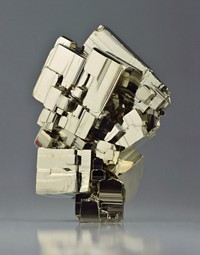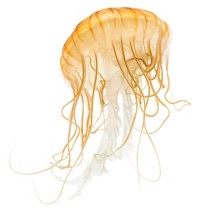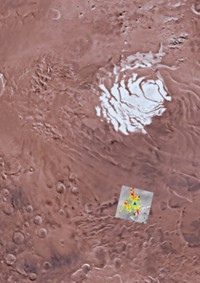Advertisement
Grab your lab coat. Let's get started
Welcome!
Welcome!
Create an account below to get 6 C&EN articles per month, receive newsletters and more - all free.
It seems this is your first time logging in online. Please enter the following information to continue.
As an ACS member you automatically get access to this site. All we need is few more details to create your reading experience.
Not you? Sign in with a different account.
Not you? Sign in with a different account.
ERROR 1
ERROR 1
ERROR 2
ERROR 2
ERROR 2
ERROR 2
ERROR 2
Password and Confirm password must match.
If you have an ACS member number, please enter it here so we can link this account to your membership. (optional)
ERROR 2
ACS values your privacy. By submitting your information, you are gaining access to C&EN and subscribing to our weekly newsletter. We use the information you provide to make your reading experience better, and we will never sell your data to third party members.
Process Chemistry
Newscripts
Better bubbles, massive mammals
by Jonathan Forney
October 1, 2022
| A version of this story appeared in
Volume 100, Issue 35
Optimized bubble blowing

The humble soap bubble can be the highlight of a child’s bath time or a poppable prop for performance art. Researchers at the University of Paris-Saclay and Slash Bubbles have developed an optimized recipe for giant bubbles that could benefit scientists, artists, and children alike.
Typically, water and some kind of dish soap are necessary to make giant soap bubbles. Recipes vary in terms of the concentration of soap and additives, such as polymers. The study, which was published on arXiv and has not been peer-reviewed, examined two main factors in a recipe for a quality bubble: longevity and ease of blowing (2022, DOI: 10.48550/arXiv.2209.04435).
Marina Pasquet, the study’s lead author, says artists inspired the study. “We wanted to see why artists used the concentrations they did,” Pasquet tells Newscripts. “You have as many recipes as there are bubble artists.”
Adding glycerol and a long, water-soluble polymer, such as guar gum or J-Lube, to the recipe gave the best balance of stability and ease of blowing, the researchers found. These additives reduced the probability of bubble failure when their concentration in the dish soap and water solution was between 0.15% and 0.30%. A glycerol concentration of 10% increased the longevity of bubbles by slowing evaporation time—without making them harder to blow.
There was one constant among the various recipes that artists provided for testing: they all used Procter & Gamble’s Fairy dishwashing liquid, which is similar to the company’s Dawn brand in the US.
Pasquet tells Newscripts that this study could provide a helpful standard to researchers studying turbulence phenomena—and to parents.
“This recipe could be used by kids with their parents to get more out of their bubble time,” she says. It could also help “older kids understand scientific processes.”
Prehistoric otters were gigantic

Modern-day otters are mostly regarded as cute aquatic animals. Remains of their newly identified ancient ancestor, Enhydriodon omoensis, tell a different story about otters in the Plio-Pleistocene era (2.5 million–3.5 million years ago). Scientists believe that these otters were as large as modern lions and that they could have been primarily terrestrial.
Researchers who examined the remains, which were found in Ethiopia’s Omo Valley, estimate that these ancient otters weighed 200 kg—most species of modern ones weigh less than 32 kg (Publ. Sci. Tech. Minist. 2022, DOI: 10.5852/cr-palevol2022v21a30).
The team used stable oxygen and carbon isotope analyses in its study. Oxygen isotope analysis is useful for determining a species’ reliance on water, while carbon isotopes can provide information on diet. E. omoensis had oxygen isotope ratios closer to modern hyenas than to semiaquatic species such as hippos.
In addition, the animal’s teeth are peculiar, says Kevin Uno, a geochemist at Columbia University and coauthor of the study. Like the teeth of modern otters, these have a rounded shape, well suited to an aquatic diet and habitat, but the dental isotopes suggest a terrestrial lifestyle and paint a confusing picture.
These massive ancestors may not have been water bound or adorable like their current-day counterparts, but otter than that, they were pretty cool.
Please send comments and suggestions to newscripts@acs.org.





Join the conversation
Contact the reporter
Submit a Letter to the Editor for publication
Engage with us on Twitter